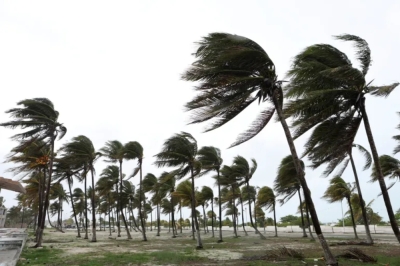
US Transportation Infrastructure: Manage Supply or Demand?
Thus, the prescription is for spending more on roads, bridges, and mass transit. One common claim is that US transportation is "crumbling" (to use a word that often arises in this context). Other claims are that additional transportation spending will reduce traffic congestion and improve economic growth.
What about the claim that US highways are in declining condition?
What about the claim that US bridges are in declining condition?
There's a National Bridge Inventory. Looking at the data from 1990-2017, "the condition of bridges remained about the same, the number of bridges increased slowly, and bridge traffic increased modestly."
What about the claim that US mass transit is in declining condition?
There is a National Transit Administration, which maintains a National Transit Database. It shows that mass transit is heavily concentrated in a few cities. "New York accounts for about 40% of all transit rides in the entire country. Chicago is second, with 6%, followed by DC, Los Angeles, Boston and Philadelphia. In total, these six districts account for about 60% of all transit rides in the country. ...The New York subway system carries about 71% of all subway riders and about 31% of all public transit riders in the whole country. ... The stock of public transit motor buses is younger than it was a generation ago and about 30% larger, although ridership has been about constant. The mean age of a subway car stayed about the same from 1992 to 2017, but at more than 20 years old, this average car is quite old. Subways carry about twice as many riders as they did a generation ago."
In short, there's is of course an ongoing need to update transportation infrastructure. But overall, the quality of US transportation infrastructure is not in decline. The authors write: "Massive increases in infrastructure are not required reverse the decline of us transportation infrastructure. Not only is this infrastructure, for the most part, not deteriorating, much of it is in good condition or improving. ... On average, most US transportation infrastructure is not crumbling, except (probably) for our subways."
But of course, one might argue that even if US transportation infrastructure is not literally getting worse, there might be large social gains from additional spending. For example, one might claim that more transportation spending will lead to improved economic growth or less traffic congestion.
The condition of infrastructure has, for the most part, improved over the past generation. However, highways and subways per person have decreased, even as travel per person has increased. Thus, while the condition of the infrastructure has improved or stayed constant, it is serving much more demand, and so the speed of travel has decreased and the experience of drivers and riders is worse. We speculate that the sentiment that infrastructure is deteriorating derives from the fact that users’ experiences are deteriorating with increased congestion, and that this deterioration is largely independent of physical condition.
Trending
-
1 UK Tech Sector Secures a Third of European VC Funding in 2024
Azamat Abdoullaev -
2 France’s Main Problem is Socialism, Not Elections
Daniel Lacalle -
3 Fed Chair Jerome Powell Reports 'Modest' Progress in Inflation Fight
Daniel Lacalle -
4 AI Investments Drive 47% Increase in US Venture Capital Funding
Felix Yim -
5 The Future of Work: How Significance Drives Employee Engagement
Daniel Burrus





Comments